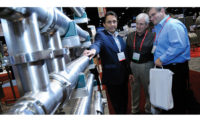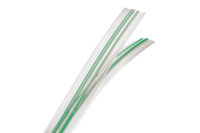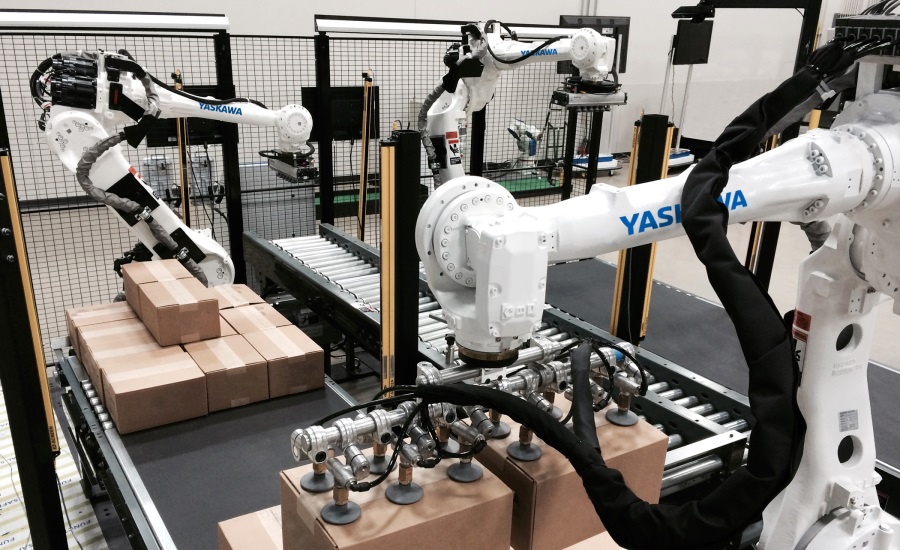Rise of the machines
See how technology takes robotics up the packaging line at Pack Expo
Advanced networking, integration and controls drive the implementation of robots beyond end-of-line applications.

Denso Robotics’ RC8 controller supports robot programming in common languages.

Yaskawa Motoman tightly integrates Universal Robotics’ Neocortex learning software with robot programming.


Rockwell Automation’s iTRAK combines a racetrack conveyor with a two-axis robot.

Intelligrated deploys the latest software advances in its Alvey palletizing and depalletizing solutions.





Editor’s note: This special report was submitted to dairyfoods.com on behalf of PMMI, the organizer of Pack Expo Las Vegas 2015.
The use of robotic technologies has long afforded manufacturers the advantages of greater productivity, higher product quality, reduced production costs and labor savings.
Last year’s “Trends in Robotics Market Assessment 2014” from PMMI, The Association for Packaging and Processing Technologies (owner and producer of the Pack Expo portfolio of trade shows), illustrated the growth in robotics use. According to the study, 75% of end users employed robotics at some point on their manufacturing lines by 2014, compared with only 20% in 2008. Now, robots and their benefits are moving far beyond their early uses in palletizing, working their way upstream and into more primary and secondary packaging applications.
PMMI’s Pack Expo Las Vegas 2015 (Las Vegas Convention Center; Sept. 28–30, 2015) will showcase a wide range of robotics solutions from the event’s 2,000 processing and packaging exhibitors.
Networked and integrated PLCs for use in a dairy processing plant
Robotics solutions will reflect the trend towards upstream applications and seamless integration.
Companies are taking two different approaches to integrating robotics into their packaging operations. The “networked approach” implements user-friendly programmable logic controller (PLC) software that sends commands to a separate robot controller.
The other approach, favored by machine builders, is a unified control solution or integrated model in which one controller handles both machine and robot motion. These multitasking PLC platforms tightly coordinate robot movements with the linear motions of conveyors and other moving devices on the line, yielding more accurate and precise product handling. Benefits of the integrated model include greater ease in software programming and reductions in costs and footprints.
When Rockwell Automation analyzed the market, it found that software integration was the No. 1 concern among packaging machine builders and robot manufacturers, says Amy Peters, manager of business planning for Rockwell Automation, which, with its PartnerNetwork program, sponsors the Center for Trends and Technology (Booth #C-4829).
“Customers told us that we needed to tighten our integration. The cost of everything else is relatively small compared to the amount of time it takes to program, diagnose, troubleshoot and integrate at the software level. They want a vendor-agnostic solution that works with all robot brands in the programming environment they are already accustomed to,” Peters says.
In the networked approach, Rockwell Automation’s Logix controller passes commands to a separate robot controller via EtherNet/IP. Customers use the Studio 5000 Logix Designer front-end interface with Add-On-Instructions and Add-On-Profile software to communicate with and configure the robot controller as the ladder logic programming is translated into robot code.
“The interface makes it look like the robot is being controlled by our controller, but the control is actually being passed over to the robot controller via EtherNet/IP. In addition, the EtherNet/IP network services, for security, safety, energy and time, are common to the rest of their operations,” Peters says.
The integrated approach combines robot and machine controls into one controller
While manufacturers have favored the networked approach, machine builders are driving automation technology suppliers to the integrated approach, combining robot and machine controls into one controller. With integrated technology, a single controller will directly manipulate the robot drives and motors.
Denso Robotics (Booth #S-6153) will feature its newest VS series robot. The VS-050 is an ISO 5 clean-room-rated compact six-axis robot. The unit features nickel plating and a design that stands up to harsh sterilizing agents in aseptic pharma packaging. All Denso robots use Denso’s new rack-mount-size RC8 controller with an open architecture for programming in common languages.
Unified control handles robot programming
Denso isn’t the only robotic solutions provider aiming to simplify controls. Yaskawa Motoman (Booth #C-4243) offers a unified control solution that handles robot programming and control with the same controller that runs the case packing, cartoning or palletizing system. Customers can use one software package with one control system to manage robot motion and configure cam and servo linear motion functions of the packaging line.
Yaskawa will demonstrate the Motoman MH12 robotic case packer with MLX200 robot interface. The system is programmed and managed on an Allen-Bradley ControlLogix PLC with Rockwell’s RSLogix 5000 ladder logic programming software, utilizing Function Blocks and AOIs that are very familiar to PLC programmers, says Dean Elkins, senior general manager, Yaskawa Motoman.
“The unified controller becomes a means of eliminating processors and simplifying language, where the robot control becomes a kernel of the overall control solution,” says Elkins.
For product pick-and-place and case packing in food packaging applications, JLS Automation (Booth #C-4703) develops packaging machines with integrated robots from ABB Robotics (Booth #C-5228). Operators manage and monitor JLS Osprey Case Packers and Talon Picking Systems from Rockwell PLC platforms, networked with ABB’s IRB 360 FlexPicker controllers, vision systems and other devices.
Conveyor tracking and vision targeting software
To optimize robot performance, JLS engineers developed EyeQTrak conveyor tracking and vision targeting software that uses proprietary algorithms written in ABB Robotics’ RapidCode programming language.
“Using ABB’s very powerful robot platform, we have yielded better performance by doing our own programming to avoid constrictions. Our programmers configure an application with EyeQTrak without needing to go into its core,” says JLS Automation President and CEO Craig Souser.
Enhancing cart picking with robotic mobility reduces order time in transit
Intelligrated’s (Booth #C-3036) Alvey robotic partial and mixed-load palletizing and depalletizing solutions use the latest advancements in robotic integration, software, controls and vision technology.
“We have used Motoman’s MLX platform on several jobs with good results. The Allen-Bradley PLC runs all the programming, functions and controls, simplifying integration with the Motoman developed AOIs,” says Earl Wohlrab, robotic and palletizing systems products manager, Intelligrated.
“We integrated our GoKart order fulfillment solution with a mobile robot from Adept, applying its autonomous mobilization technology to a distribution and fulfillment environment. Enhancing cart picking with robotic mobility reduces order time in transit through the distribution center and frees labor to focus on more complex tasks without overhauling existing workflow," Wohlrab says.
The integrated Adept robot uses onboard lasers and mapping technology to navigate through a warehouse or manufacturing facility, adjusting its path to move around obstructions.
Robots that sort by color
Robots are advancing on many additional fronts. Vision sensors give robots the ability to sort by color and enable a variety of nimble end-of-arm tooling. Additionally, OEMs are equipping robots with features to advance spatial awareness, allowing personnel to work safely adjacent to the robots. With no need for additional cages, fences or guards, and the ability to move between locations, these robots add flexibility to operations.
Consumer goods manufacturers have also seen robot designs that support sanitary food handling and pharmaceutical aseptic processing; and robots that learn from experience and adjust accordingly to execute applications support faster, more flexible production.
In the realm of more seamless data sharing between packaging machines and their robot partners, new machine form factors with common control systems are providing simplified, lower cost designs.
Robotics will continue to evolve as robot and automation vendors collaborate to meet packagers’ demand for a standard unified control system that is simple, flexible and easy to maintain.
About PMMI
PMMI, The Association for Packaging and Processing Technologies, is a trade association representing more than 700 companies that provide a full range of processing and packaging machinery, materials, components and containers.
Looking for a reprint of this article?
From high-res PDFs to custom plaques, order your copy today!











